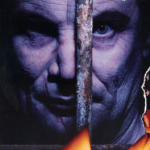Screenwriting Mastery › Forums › Scene Mastery › Scene Mastery 8 › Week 1 › Day 4: What I learned …
-
Day 4: What I learned …
Posted by cheryl croasmun on March 26, 2023 at 8:40 pm“What I learned rewriting my scene…?”
John Woodward replied 2 years, 3 months ago 6 Members · 5 Replies -
5 Replies
-
I learned how to enhance dialogue by the smallest of things like ‘don’t call me son’ and also inserting irony like telling Tom Cruise that ‘he can’t handle the truth’ when his role is responsible for exactly that. Irony helps build tension, the right irony helps create a scene. I’ll now go back and review this part of my script and make it better!
-
I ask myself a lot as I write, “is this realistic, would this happen”? But the fact is that we are writing movies. It doesn’t always need to be realistic. I don’t believe a hardend marine colonel would be coerced into blurting out a confession when he is instructed by the judge that he doesn’t need to answer the question. This man has made tough decisions in his life and if anyone can control their emotions, it would be him in that situation. Same with the Yuma clip. I mean Crowe just guns down the entire gang? I haven’t seen that movie but I don’t buy it.
The truth is, I don’t need to buy it. It’s a movie and I have to remember that.
-
With every scene I watch, I’m learning that each scene is it’s own distinct unit. If I write each scene using the techniques Hal talked about in the scene mastery class, my writing will improve a thousand fold. I’m also learning that the scenes that have the most impact are the ones where the characters are telling (their) truth and are doing it in a passionate, deeply felt way. They are allowing themselves to show and feel their emotions. Audiences want to see characters say things that they might want to say but never would. This makes writing fun and I need to take the restrictions off myself and try to write at a deeper, truer level.
-
This particular class is called the climax. I have never seen A Few Good Men, but this scene is undoubtedly the climax. I’m assuming the Colonel is suspected of ordering the “Code Red” on a soldier under his command, and that soldier died. The cross-examination by the Capitan is trying to get to the Truth that the Colonel did order it. The word truth is everything in this scene. It’s the Intriguing dialogue, the escalation of the conflict with the line, “you can’t handle the truth.” The Truth is the ultimate expression of the conflict of trying to determine if the Colonel ordered the “Code Red.” The Truth is how the story is resolved because you find out that the Colonel did order the “Code Red.” Finally, the Colonel and Capitan speak their version of the Truth. Courtroom scenes are all about the Truth. Developing characters with Truth in them is compelling, or the opposite of who is lying can be compelling too. I need to review my script and see if my characters have Truth. I believe the Truth gives characters depth.
-
3:10 to Yuma.
What I learned: There are several payoffs and reversals and surprises. There is almost no dialogue in the entire scene. The action is powerfully dramatic, and its meaning is conveyed substantially through subtext that is very open to interpretation. I can imagine that most moviegoers would debate the meaning of the climactic sequence.
-
This reply was modified 2 years, 3 months ago by
 John Woodward.
John Woodward.
-
This reply was modified 2 years, 3 months ago by
Log in to reply.
